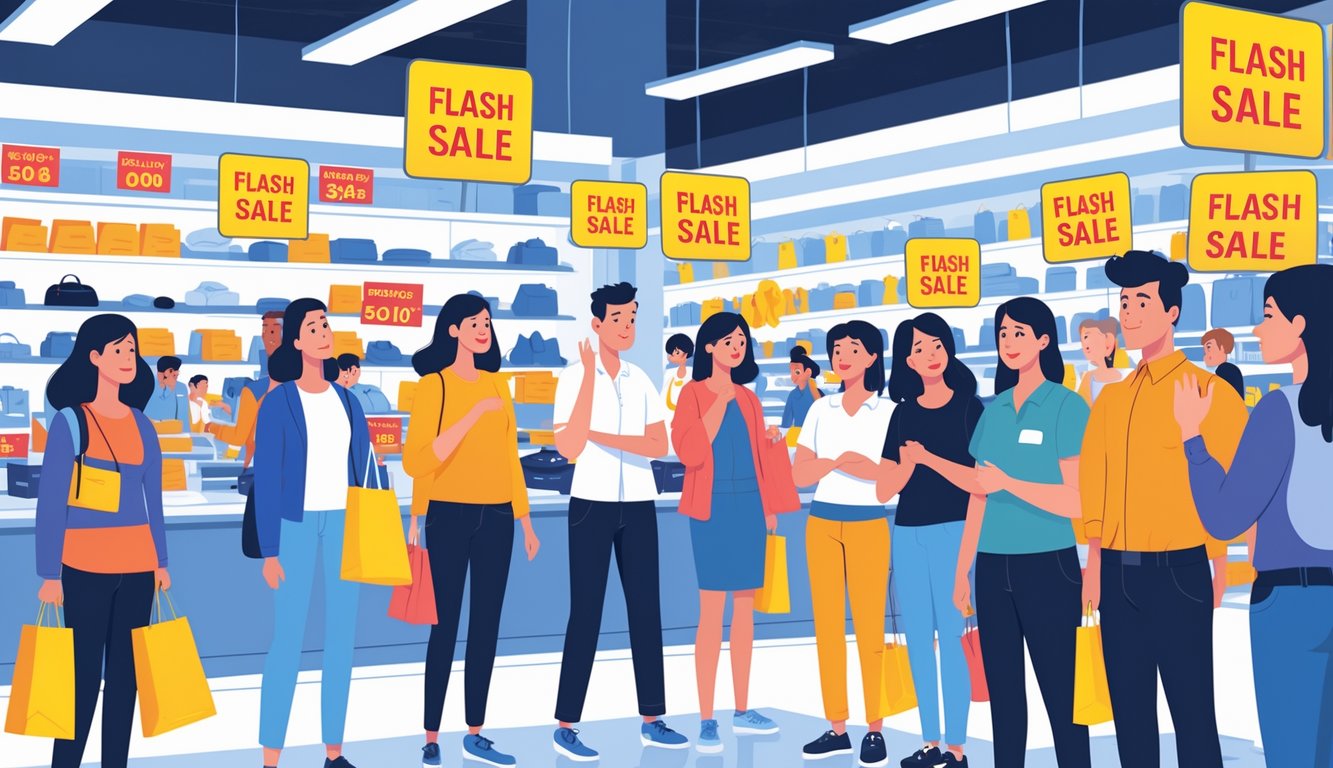
The Impact on Brand Loyalty and Perception
Nobody’s updating wishlists now that flash sales are gone. Carts get abandoned left and right. Everyone thought brands would look fancier without discounts, but honestly? It just scrambles trust and sets weird expectations. Loyalty programs and “exclusive deals” pop up, but do they scratch that itch? Doubtful.
Brand Reputation After Bans
Notice how, after the last flash sale, those niche sneaker brands just felt… dead? My inbox is quieter, hype’s gone. One analytics firm (name’s gone, but their charts were solid) said engagement drops up to 17% when customers stop believing in “special” deals.
Brands try to fill the void with “insider previews”—mid-tier perks, free tote bags, whatever. According to Locad’s e-commerce insights, brands lose their exclusive vibe if they yank discounts after relying on them too long. Suddenly, full price feels random. Some VP says, “We’re premium again!” but who buys that? If I’m paying full price now, was it all a scam before? Nobody’s ever straight about it.
Long-Term Effects on Customer Loyalty
Personalized recommendations, “early access”—they don’t come close to the rush of a timed deal. I read a study last fall (can’t remember the journal, but it was legit) showing repeat purchases didn’t recover for three quarters after bans. Loyalty lags, especially for basics like athleisure. Makes sense, right? Take away countdowns, kill FOMO, and impulse buying just dies.
Loyalty gets weird. People drift off. The flash-sale crowd either vanishes or starts code-hunting somewhere else (I see this all the time). Loyalty programs sometimes add “points per share” or secret menu stuff, but most shoppers just expect deals to come back. Even the best “VIP” drop? Meh, no buzz if everyone’s numb from seeing regular prices all year.
Balancing Sales Volume and Sustainability
Why do we act surprised when retailers end up with mountains of unsold denim? I mean, you walk past those warehouses—literal hills of last season’s jeans—and then everyone’s clutching pearls when some of it winds up in a landfill. Sales spike, complaints flood in, and the whole “revenue vs. sustainability” debate feels like a joke spreadsheet missing half the data. Am I the only one who thinks this whole system’s a mess?
Sustainable Promotion Approaches
Last Tuesday, I swear, three “final hours!” sales hit my inbox at once. Not even real deals—just the usual: jack up the price, slap a red tag, hope nobody notices. Cynical? Maybe. But the UK’s Competition and Markets Authority says nearly 40% of these so-called deals rely on inflated original prices. Where’s the watchdog when you need it?
I’ve seen marketing teams panic in Q4, chasing numbers with desperate one-day sales. Margins shrink, loyal customers get bored of the same tricks, and shipping delays just make everyone mad. One year, after a holiday clearance push, our customer service team basically lived at their desks for a month. Lifetime value? Ha.
Honestly, the only real move is to weave sustainability into the whole thing. Eco-packaging, recycled materials—sure, you get a nice badge for your site, but if you’re not being transparent, what’s the point? Harvard’s research shows sustainability is now table stakes, not an “extra.” And don’t even try to call your flash sale “exclusive” if you’re just restocking two days later. That kills trust, kills long-term sales. People aren’t dumb.
Managing Excess Inventory Responsibly
Inventory management? Nightmare fuel. First job in apparel, got stuck managing spring sandals that arrived in June. Warehouse manager just stared at the boxes. No one wants to admit they ordered too much, so they try to dump it all with endless flash sales. It burns brand trust and barely moves the needle. Sales go up, but profit? Not really.
You know what helped? Smaller, more frequent markdowns. We tried weekly price drops instead of one big “everything must go” event. Conversions held steady, and buyers didn’t panic-buy only to return half their order. The demand planner kept mumbling about negative margins, and, well, he had a point.
Honestly, just track inventory in real time, even if your ERP system is ancient. Anything’s better than flying blind. And those partnerships with local resale shops or textile recyclers? Lifesavers. Less landfill, more feel-good PR. Direct donations get messy, but customers notice. Sometimes, weirdly, they buy more when they know old stock isn’t just trashed.
Technological Innovations and Predictive Analytics
So, everyone’s hyped about AI and machine learning, but let’s be real: the second a clearance banner goes up, half these apps crash. High-tech retail, they say. Predictive analytics and digital traffic management are supposed to fix inventory and shopper traffic, but honestly, it feels like they’re winging it.
Managing Traffic Spikes and Availability
Flash sale hits, and the site freezes. Refresh. Refresh again. Cart’s empty—again. Predictive analytics tools (Shopify brags about these in their docs) try to guess when everyone’s going to mob the site for loungewear or sneakers, but the experience? Still a mess.
Companies pour money into cloud scaling, but sometimes the landing page moves slower than a Monday morning. Remember the 2010 “flash crash” on Wall Street? Bots tanked the market for a few minutes—now retail tech folks use that as a horror story. They claim they’re avoiding the same disaster every time a $30 boot deal melts their servers. Lawfare’s got a whole thing on the AI flash crash, if you’re bored.
Backend teams keep telling me proactive monitoring is the only real fix, not just “auto-scaling.” Still, you can throw millions at cloud load balancers, and one little microservice will still blow up because the forecast was off by a couple thousand shoppers at 10:01 a.m.
Optimizing Shopping Experiences
Want to see chaos? Watch brands try to predict wishlist demand. Predictive analytics dig through site clicks, login histories, abandoned carts—Shopify swears this is the magic sauce. It’s not total nonsense, but there’s a huge gap between “our AI knows all” and “sold out in ten seconds.”
Retailers use AI to figure out when you’re about to ditch your cart and what coupon might keep you a minute longer. Amazon’s engineers once said a 1% higher conversion rate came from faster inventory updates and ditching a reCaptcha. Still, inventory updates lag, loyalty dashboards glitch, and shoppers lose out during the ten-second scramble before the deal’s gone.
Big data sounds amazing, but Vivatechnology points out that real-time analytics still gets tripped up by viral tweets, buggy apps, or weird browser add-ons. My advice? Don’t trust one-click checkout. Screenshot your order confirmation. Sometimes the robots are more unreliable than the humans.



